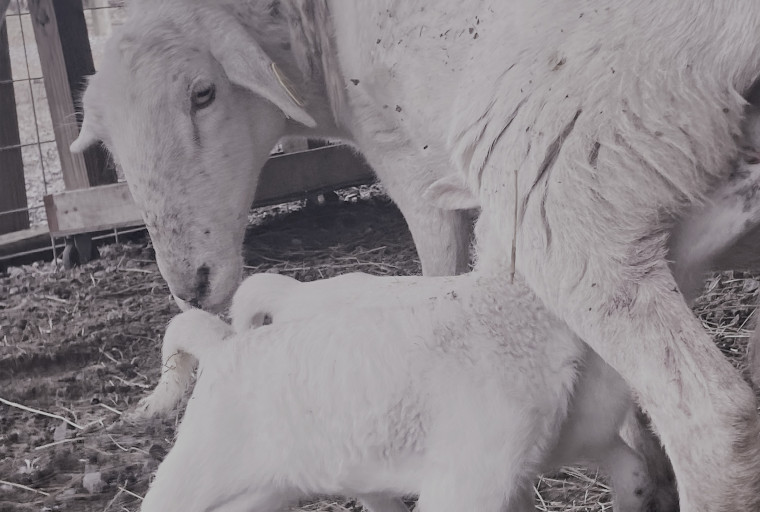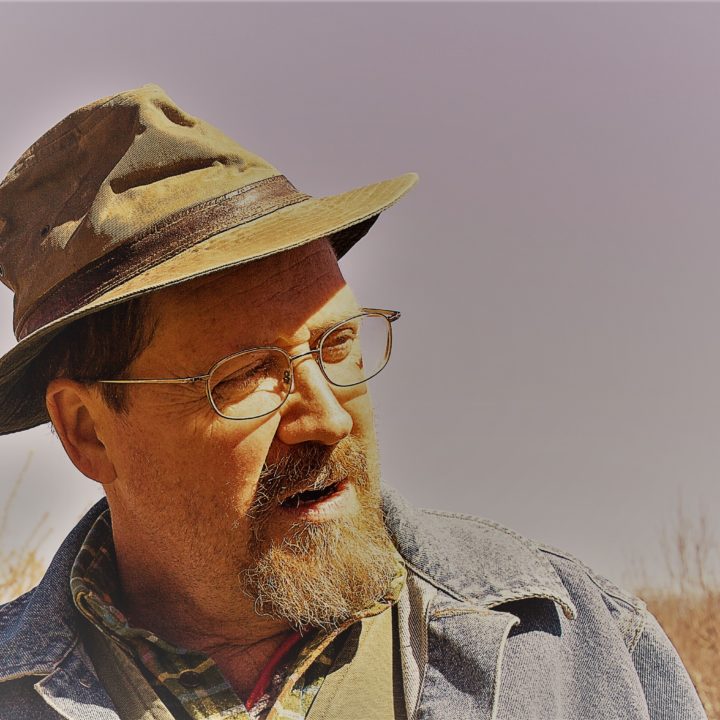That in this blighted landscape there are still places of settled beauty is a comfort: a chance to glimpse what went before and could be again. Yet it is also sad—that the occasion of removing oneself from an anywhere to a somewhere should be so jolting as to be noticeable; that the simple absence of suburbs, strip malls, check-cashing joints, derelict commercial ventures, new fast-food emporia serving up empty calories for the lost, the bloated, and the lonely, before those buildings too slough off into the accumulating mire of abandoned infrastructure on the edges is somehow distinctive.

On this morning I am in my truck driving on a remote road in another state on my way to pick up ewe lambs earmarked to become next year’s breeding ewes. The valley, not the vertical, winding, densely wooded path I expected, is everything one would not imagine so close to the heart of empire. Now, I’m not going to name this forgotten valley, because it deserves privacy. Of course it is not inconceivable that some AI algorithm or, more likely, a real estate developer is already mining the coordinates to bring this place into the commercial fold of modern capital, thus ruining it forever.
This forgotten valley is a working valley. It is not the preserve of the newly arrived affluent in gated enclaves, who provide gainful employment to the natives by allowing them to scrub their toilets and polish their antiques. Nope, this is the genuine somewhere, a rare gem just a few inches on the map from D.C., that expanding Borg cluster of the soulless, the clueless, the grifters, and the grafters. So just in case this valley remains off their maps, let us keep it hidden, mum’s the word, ok?
This valley consists of open, gently rolling hills. Up to five miles across, it is protected by steep forested ridges on either side. Every few miles I pass through a compact hamlet, and for the last hour and a half to my destination I do not spot a single fast-food restaurant or—and this is more tragically impressive—a dollar store. There are plenty of family diners, small-time tractor dealers, and a scattering of feedstores. Although primarily a valley of crops and livestock, there are also active signs of small quarrying. I see none of the usual small prefabricated factories that so often dot a rural landscape.
The housing stock is mostly modest older ranchers and the classic T-shaped farmhouse so prevalent in the East, a few mobile homes, but to my relief, no McMansions. A handful of pre-Civil War homes of stone, set back in groves of oaks, signals an agrarian prosperity both past and present. There are even a few water mills that, although no longer in service, are nicely kept up, perhaps awaiting the day in a future low-tech world when reuse makes sense. This is not an empty valley—homes, both clustered and isolated, are to be seen for the full length of my drive—but no strip mall architecture assaults me as I approach and leave each community. While a few farms advertise places to stay, and many promote eggs, produce, and hay for sale, nothing signals the desperation of the developer to sell both virtue and heritage.
At my destination, a slightly stooped nonagenarian in overalls greets me in a pickup by his mailbox. His son is busy in a field spreading manure with a tractor; his grandson is in Pennsylvania dropping off lambs. I trail the old man in my truck as we bump along to where his son is working. Once the son is collected, I follow behind, down a good mile of a family road with half a dozen homes belonging to the three generations who work the 500-acre farm, before arriving at a barn next to a formerly fine brick two-story, now unoccupied and crumbling. The son tells me it is the family home, built in 1833 after the clan had settled in this valley.
A few more minutes of introduction, and we turn our attention to the ewe lambs for sale. I select four chunky four-month-olds to bring home. We load the lambs, exchange cash, and say our goodbyes. I turn to retrace the hour-and-a-half drive through this lovely, remote somewhere valley and then embark on another five hours of interstate, cheek by jowl with too many others driving to anywhere. Finally, a little after seven in the evening, stiff of neck following a total of twelve hours on the road, I pull onto the gravel driveway of our farm. Cindy is waiting for me in the dark by the mailbox.
…………………………………………………………………………………
For those of you who listen to podcasts, I have been interviewed on a couple over the past few months (promoting my book). The experience of being asked questions and having to respond on the spot is certainly an interesting and new one for me. It has taught me that I’m better at coming up with an answer after a few days of mulling it over. Alas, that is not the format on offer.
A one-and-a-half-hour interaction with two hosts (Josh and Jason) of the Doomer Optimism podcast: youtube.com/watch?v=MIhsXKq0ZzY
A thirty-minute Q&A with John Murdock of the Brass Spittoon podcast: frontporchrepublic.com/2024/01/brian-miller-on-kayaking-with-lambs/ (Link is near the bottom.)
………………………………………………………………………………..
Reading this weekend: Death Comes for the Archbishop (W. Cather), a slow, evenly paced novel in which nothing much happens but a man’s life. And—I’m just guessing here, having the last third yet to finish—it might just end with his death.






